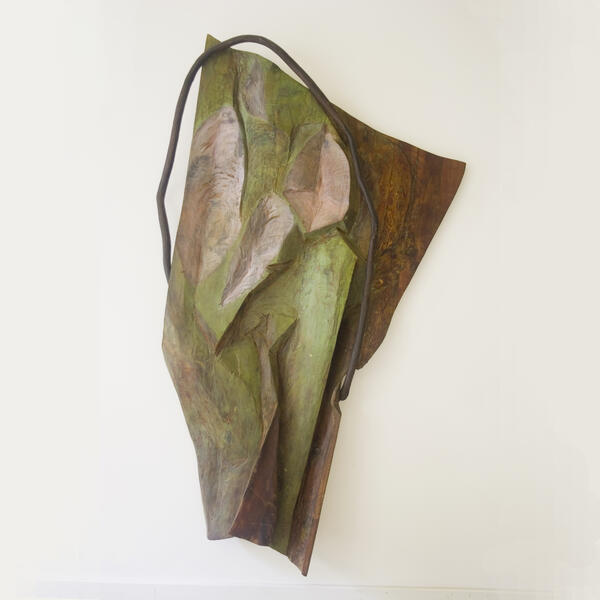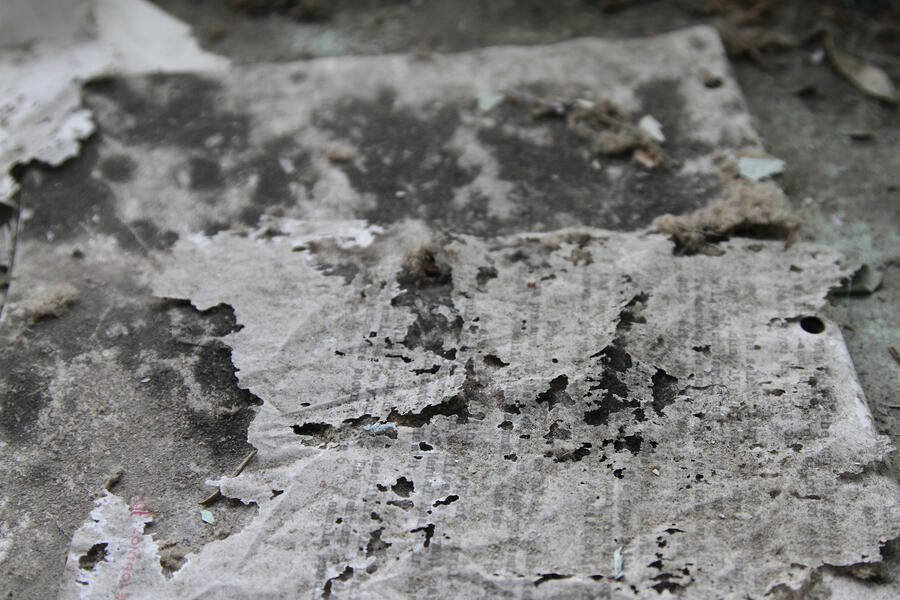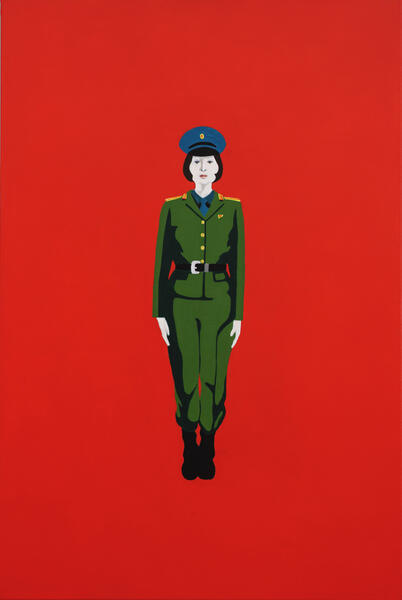My husband and I visited the Trans-Allegheny Lunatic Asylum in Weston, WV. Closed in 1994, it's what you would expect--peeling paint, falling ceiling tiles, cobwebs, grit, Virginia Creeper making inroads, oxidation, broken windows from bullet holes and thrown rocks. The rooms had been emptied of furniture and equipment. There were a few props to enhance the popular ghost-hunting tours. You stumble upon the sad and lonely deaths of animals. We found a cat and a bat. The guide gave us a map marked with "double suicide" and "bedpost murder."
Photographing in such places is a personal exploration for me. Perhaps it helps to purge the dark days of trying to help my mother through her depression. After my brother's death, she had long stays in psychiatric wards for the remainder of her life. The sadness and suffering that took place inside these buildings is personally acknowledged and easily imagined. I brought my ghosts with me. Owing to a rare disease, my own frequent association with hospital corridors, examination rooms, and surgical theaters--the shape of such places form parts of my psyche. Other considerations are intriguing. The hospital was used as a Civil War fort, built according to the Kirkbride Plan which attempted to promote a healthy environment for patients, designed by Baltimore architect Richard Andrews, and it claims to be the largest hand hewn building in the world after the Kremlin. Nestled in the mountains, it never would have been warm.
There were a number of buildings apart from the original hospital--an auxillary building for women, a geriatric building, forensics, a medical building (closed for asbestos cleanup), cafeteria, and maintenance facilities.
Photographing in such places is a personal exploration for me. Perhaps it helps to purge the dark days of trying to help my mother through her depression. After my brother's death, she had long stays in psychiatric wards for the remainder of her life. The sadness and suffering that took place inside these buildings is personally acknowledged and easily imagined. I brought my ghosts with me. Owing to a rare disease, my own frequent association with hospital corridors, examination rooms, and surgical theaters--the shape of such places form parts of my psyche. Other considerations are intriguing. The hospital was used as a Civil War fort, built according to the Kirkbride Plan which attempted to promote a healthy environment for patients, designed by Baltimore architect Richard Andrews, and it claims to be the largest hand hewn building in the world after the Kremlin. Nestled in the mountains, it never would have been warm.
There were a number of buildings apart from the original hospital--an auxillary building for women, a geriatric building, forensics, a medical building (closed for asbestos cleanup), cafeteria, and maintenance facilities.









